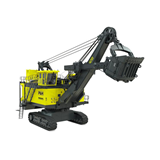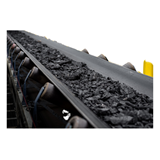Then again, it's an industry that's always made life difficult for itself. By necessity it must operate in the most remote and inhospitable terrain Australia has to offer.
The logistics of keeping massive processes flowing smoothly in such conditions, as well as keeping up with the comings and goings of huge numbers of essential people would send most managers round the twist.
Yet the industry persists in the face of astronomic geographical obstacles, not to mention some rather pesky governmental and environmental ones as well.
So what are the challenges facing mining today and what might you do about them?
Job numbers are the pits
In 2000 a total of 80,000 people worked in mining across Australia. By 2012 that figure had gone through the proverbial roof: 275,000 or nearly 200,000 more workers in just 12 years. While the word 'boom' could be deemed inappropriate in mining, a boom is exactly what it was. Then came the bust.
In the next two years to late 2014, 38,000 people left the mining industry. While a good number of these can be attributed to resource construction workers no longer required, a lot of them can't. There simply aren't many new mines out there and some major projects are nearing completion and winding down their workforces.
Trouble at the coalface
Most Australian coal is exported, so if international markets start keeping their wallets in their pockets, there is cause for concern. China, for example, is in the process of capping both coal production and coal use. Far from good news from such a potentially massive market even if Japan is still our biggest customer.
In North America and Europe, emission reduction initiatives have rendered coal even less popular, especially in the face of renewable energy's dramatic rise. As if that's not enough, high electricity costs in Australia have sent many industries to the wall and scores of homeowners to their consumption calculators. With electricity use on the decline, it's not a question of if local coal-fired power stations will close, but when.
FIFO isn't flying
It's no secret that mining companies want fly-in fly-out contract workers for one reason: it stops their workforce forming a close-knit onsite community. Such communities facilitate easier union affiliation and that's the last thing mining companies want.
So long as workers continue to disappear to all corners at the end of their contracted shifts, unions will struggle to build any bargaining power for them. While union-affiliated workers on collective agreements have some sort of control over their salaries and work conditions, contractors don't.
What's the plan then?
None of this portrays the future of Australian mining in a very flattering light. However a recent report on the state of the industry by prominent consultancy Deloitte outlined some positive strategies mining companies can adopt.
They suggest forgetting about cost control and putting the focus on innovation. Steering into more unconventional fossil fuels and even renewable energies may be the way forward.
Locally owned mining companies should also forget about 'Keeping it Australian' and seek foreign investment to offset a lack of internal financing, though better federal and state collaboration must be sought.
Overall, mining has always been subject to cycles and 2015 seems to be about holding onto what you have, keeping short term goals sensible and long term goals flexible, but positive.










